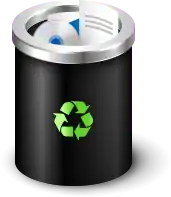Faker (3.5e Prestige Class)
Faker
| “ | If you can't win, just imagine something with that you can. | ” |
| —A forgotten hero. | ||
Magic can create quasi-real weapons that kill almost like the real ones, but most wizards prefer using bright energy effects as a weapon. That minority, that perfected difficult art of creation, are called fakers. Originally this word was a taunt, but most fakers hold this title proudly...
Becoming a Faker
Basically, fakers are spellcasters that use illusion spells, commonly wizards or sorcerers. However, they also need some skill at fighting with the weapon they create, so, they often multiclass with fighter or ranger or just start as battle sorcerers.
| Base Attack Bonus: | +4. |
|---|---|
| Skills: | Craft(weaponsmith) or Craft(bowmaker) 8. |
| Feats: | Spell Focus (Illusion). |
| Special: | Must be able to use Spectral Weapon as a spell or spell-like ability. |
| Level | Base Attack Bonus |
Saving Throws | Special | Spellcasting | |||||||||||||||||||||||||||||||||||||
|---|---|---|---|---|---|---|---|---|---|---|---|---|---|---|---|---|---|---|---|---|---|---|---|---|---|---|---|---|---|---|---|---|---|---|---|---|---|---|---|---|---|
| Fort | Ref | Will | |||||||||||||||||||||||||||||||||||||||
| 1st | +1 | +0 | +0 | +2 | Enchant quasi-real weapon. | +1 level of existing spellcasting class. | |||||||||||||||||||||||||||||||||||
| 2nd | +2 | +0 | +0 | +3 | Stable quasi-real weapon; throw anything. | +1 level of existing spellcasting class. | |||||||||||||||||||||||||||||||||||
| 3rd | +3 | +1 | +1 | +3 | Double quasi-real weapon; persuasive fake. | ||||||||||||||||||||||||||||||||||||
| 4th | +4 | +1 | +1 | +4 | Range quasi-real weapon. | +1 level of existing spellcasting class. | |||||||||||||||||||||||||||||||||||
| 5th | +5 | +1 | +1 | +4 | Easier fake. | ||||||||||||||||||||||||||||||||||||
| 6th | +6 | +2 | +2 | +5 | Quasi-real armor; persuasive fake. | +1 level of existing spellcasting class. | |||||||||||||||||||||||||||||||||||
| 7th | +7 | +2 | +2 | +5 | Alterning structure. | +1 level of existing spellcasting class. | |||||||||||||||||||||||||||||||||||
| 8th | +8 | +2 | +2 | +6 | Broken illusion. | +1 level of existing spellcasting class. | |||||||||||||||||||||||||||||||||||
| 9th | +9 | +3 | +3 | +6 | Persuasive fake. | ||||||||||||||||||||||||||||||||||||
| 10th | +10 | +3 | +3 | +7 | Easier fake; quasi-real weapon focus; quasi-real weapon specialisation. | +1 level of existing spellcasting class. | |||||||||||||||||||||||||||||||||||
|
Class Skills (4 + Int modifier per level) | |||||||||||||||||||||||||||||||||||||||||
Class Features
Spellcasting: At each level, except 3rd, 5th and 9th, you gain new spells per day and an increase in caster level (and spells known, if applicable) as if you had also gained a level in a spellcasting class to which you belonged before adding the prestige class level. You do not, however, gain any other benefit a character of that class would have gained. If you had more than one spellcasting class before becoming a Faker, you must decide to which class to add each level for the purpose of determining spells per day, caster level, and spells known.
Enchant quasi-real weapon: You can apply any weapon-enchant spell you possess (for example, Magic Weapon or Keen Edge) to a quasi-real weapon made by you.
Stable quasi-real weapon: Starting at 2nd level, your quasi-real weapon has a 1d4 turns delay before disappearing. It means, in particular, that you can throw it. You also can maintain up to your class level/2 quasi-real weapons at time made by similar spells (however, you can't make multiple weapons with one spell).
Throw anything: On 2nd level you gain Throw anything feat.
Double quasi-real weapons: Starting at 3d level, you can wield two quasi-real weapons as if you had Two-weapon fighting feat. This feat doesn't apply to real weapons you use.
Persuasive fake: Starting at 3d level, your fakes become so persuasive, that you look like a real creator. Any disbelieves against your illusion spells have a +1 DC. This bonus advances to +2 on 6th and +3 on 9th level.
Range quasi-real weapon: Starting at 4th level, you can use Spectral Weapon spell to create ranged weapons, such as bows or slings. It's attack is considered as ray attack with normal damage (composite bows have composite bonus up to 1/3 your class levels). The weapon is created with 2d10 appropriate projectiles. You can also create only projectiles; in this case you create 50 of them.
Easier fake: Starting at 5th level, you can use Spectral Weapon as a 2nd-level spell. You can, however, still use its 3rd-level version in order to penetrate spell resistance. At 10th level this ability advances, allowing you to use it as a 1st-level spell.
Quasi-real armor: Starting at 6th level, you can use Spectral Weapon spell to create armor of any type. This armor provides no arcane spell failure chance, but an enemy that successfully disbelieves it ignores its AC bonus.
Altering structure: Starting at 7th level, when you create quasi-real weapon, you may cast any one weapon-enchanting spell you possess on it as a free action. This spell is spent as normal.
Broken illusion: Starting at 8th level, you may, as a free action, spend any weapon enchanting spell already casted on quasi-real weapon (that means, you need two similar spells) in order to make it explode. Distance to the weapon doesn't matter. The explosion deals to everybody in 10ft radius (including yourself) 4d6 damage if the weapon was created by first-level spell, 6d6 if it was created by second-level spell, or 8d6 if it was created by third-level spell. Successful disbelieve check halves the damage. If the enchanting spell made weapon deal damage of particular type (for example, Fiery Blade), the damage-type of the explosion is the same; othervice it's energy damage.
Quasi-real weapon focus: At 10th level you gain Weapon focus that applies to any quasi-real weapon you create. It doesn't apply to real weapons.
Quasi-real weapon specialisation: At 10th level you gain Weapon specialisation that applies to any quasi-real weapon you create. It doesn't apply to real weapons.
Ex-<-pluralized class name->
<-What happens (if anything) if characters of this class lose an entry requirement or violate their code of conduct (if this class has one). Delete this section if there are no contingencies for continuing in this class->
Playing a <-class name->
Combat: <-Typical role in combat->
Advancement: <-Typical advancement options for characters with this class. Include desirable multiclass options->
Resources: <-What kind of assistance members of this class can expect from each other including possible organizations->
<-pluralized class name-> in the World
| “ | <-Some quote from a character of this class-> | ” |
<-Where characters of this class fit in a d20 world->
NPC Reactions: <-How NPCs react to characters of this class->
<-class name-> Lore
Characters with ranks in <-the appropriate skills-> can research <-insert prestige class name-> to learn more about them. When a character makes a skill check, read or paraphrase the following, including information from lower DCs.
| DC | Result |
|---|---|
| 11 | <-not so common knowledge->. |
| 16 | <-rare information->. |
| 21 | <-very rare information->. |
| 26 | <-information so obscure that members of this class might not even know it->. |
<-pluralized class name-> in the Game
<-How characters of this class fit in the game (PC and NPC) and what roles they play->
Adaptation: <-Fitting this class in your campaign->
Sample Encounter: <-DM placement for NPC of this class->
EL whatever: <-Encounter scenario and character info on sample NPC including stat block. The CR of the NPC is typically the same as the EL for the encounter->
Back to Main Page → 3.5e Homebrew → Classes → Prestige Classes

